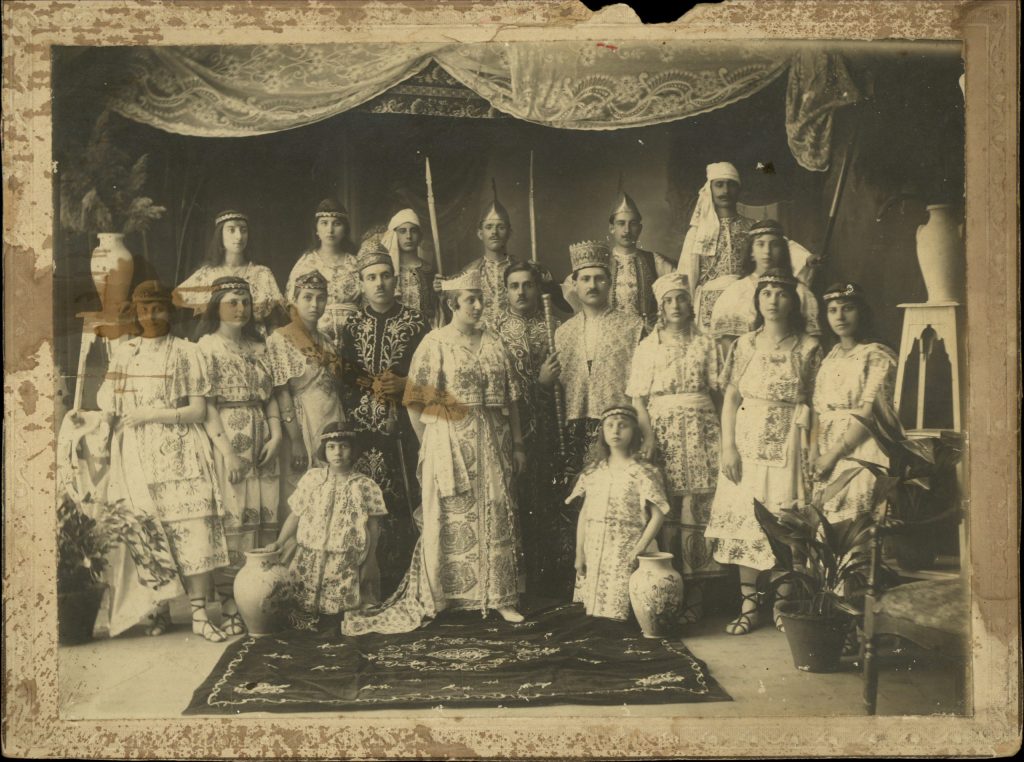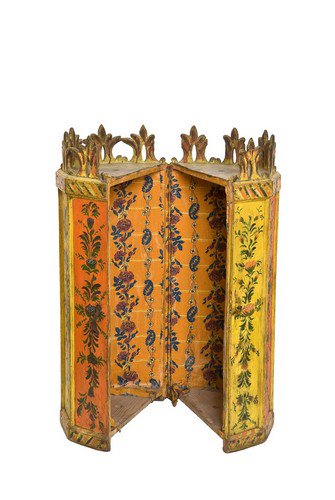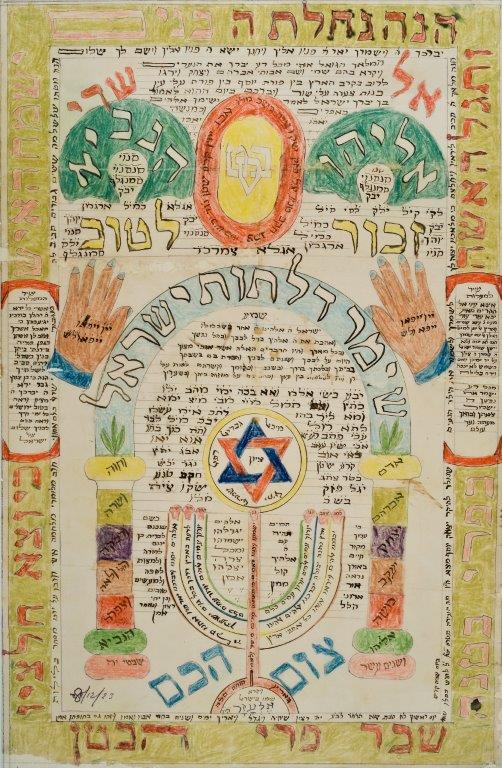
“The Romaniote Jewish Community of Ioannina: A Journey Through Time and Two Nations” was the subject of a fascinating webinar hosted recently by the American embassy in Athens and the Consulate in Thessaloniki.
The lecture was the 15th annual such event in memory of David Tiano, a Consulate employee who was tortured and executed by the occupying German forces in December of 1941. Tiano had been a descendant of the Romaniote Jews of Ioannina.
The discussion was led by Dr. Zanet Battinou, Archaeologist, Director of The Jewish Museum of Greece; Professor Mimis Cohen MD, the Founding member of the American Friends of the Jewish Museum of Greece and Dr. Moissis Elissaf, the mayor of Ioannina.
Dr. Elissaf, himself a descendant of the historic Romaniote community, is the first Jewish mayor of a Greek city.

Proposed Holocaust Museum in Thessaloniki will tell story of the “Jerusalem of Greece”
Ambassador Pyatt noted that Parliamentary approval still needed for the construction of a Holocaust Museum in Thessaloniki, the second-largest Greek city that once was called “the Jerusalem of Greece,” home to the majority of Greece’s Jews.
The Museum will “tell the stories of the many thousands of Jews who died in the Holocasust and teach tolerance and diversity,” according to Pyatt.
He hopes as well that it will be able to contribute to education and attract visitors from all over the world, highlighting the city’s special history.
As an ambassador, Pyatt noted, he is proud that the Greek Ministry of Defense agreed to share its archives with the US Holocaust Memorial Museum in Washington and agreed to display personal items once owned by refugees who perished in the 1946 Athena shipwreck.

“Stand together against hate and intolerance in all their forms”
The people of the United States and Greece,” he said,” stand together against hate and intolerance in all their forms.”
David Saltiel, President of the Jewish Community of Greece and vice chair of the World Jewish Congress, remarked to the participants that we all “need to remain vigilant against bigotry and intolerance and prejudice.” Unfortunately, he said, it is clear that anti-Semitism is still a problem for humanity, decades after WWII, “and anti-Semitism is growing at an alarming rate.”
Each year, he said, the Tiano lecture is an opportunity to express their commitment for actions to counter anti-Semitism and “encourages the younger generations to view Diversity as a plus, not as a threat.”
Greek Reporter asked the panelists what could be done to root out anti-Semitism in Greece today. Some seem to think that Greek Jews, whose ancestors may have lived in Greece for many centuries, are not truly Greek. Can this mindset ever be defeated?

Anti-Semitism “not a Greek disease”
Dr. Battinou said that it was her firm belief, and is also what drives the Museum itself, that the way to do this is “through information and education. Offering opportunities for people to hear and learn and understand, and to get to know. This is the only way to challenge these beliefs and the ignorance that feeds them.”
Dr. Cohen replied “Let’s not forget that anti-Semitism is not a Greek disease. It’s an international disease. And we have to — whatever it takes, fight racism and antisemitism.
“It’s up to everybody to fight it at their level, and also for governments to take strong stands and draw some important red lines. There is freedom of information and people can do and say a lot of things — but there has to be a limit. And I think the direction of education and international participation is what is necessary.”
Romaniotes are single oldest community of Jews in entire European diaspora
Saltiel remarked that these annual lectures give us an opportunity to explore the diversity that existed within the Greek Jewish community itself. The Romaniote community for centuries lived alongside the Sephardic and Ashkenazi communities in Greece as well. They constitute a completely unique branch of Jewry.
“Despite the fact that they were almost totally decimated during the Holocaust,” they persevered, Saltiel explained. They constitute the single oldest community of Jews in the entire European diaspora.
Archaeologist Dr. Zanet Battinou, a member of the Romaniote community herself, was behind the Greek educational system’s establishment of a Holocaust educational curriculum in 2001.
Married to a descendant of the Tiano family, Battinou feels a special connection to him. Have maintained a community there since the 4th century BC. Adopting the Greek language but keeping Hebrew words, they created a unique dialect of both written and spoken language, as seen inscriptions throughout the area.
Synagogue in the area since first century BC
They combined their own ways and customs into a unique folkways although they kept Hebrew for their worship. There is evidence of a synagogue in the area built as early as the first century BC.
Their community remarkably remained intact, despite all the many upheavals of the Greek state, until the Second World War.
Ioannina became a significant urban center beginning in the eigth century, even attracting Jews from other areas. The first clear historical reference to a Jewish population in the city was seen in the 14th century in the form of a government decree.
Living under Ottoman rule beginning in the 1400s, the Jewish population of the area were left more or less in peace during those centuries, allowed to practice their religion and their trades. In the 16th century, co-religionists even began to arrive in Ioannina from Sicily, according to Dr. Battinou.
The population continued to flourish and increase under the rule of Ali Pasha in the 19th century. Most of the Romaniote Jews were involved in trade, with small shops and family businesses.
The synagogue, the center of the community, was within the Jewish quarter within the castle walls of the city — and, remarkably, it still exists today. Another synagogue, built for the Italian Jews, was completely destroyed in WWII.
Finely-worked silver a mark of Ioannina culture
The synagogues housed many treasures, including ornate oil lamps and Torah scroll finials, all of finely-worked silver, which became the hallmark of Ioannina. Silver dedicatory plaques were also common in the city, becoming another well-recognized mark of the city’s culture.
A silver Megillot, or parchment scroll holder, also of finely-worked silver, holds the story of Esther, which is recounted each year during the feast of Purim. One of the only surviving such scroll holders in existence, it is in the collections of the Jewish Museum of Greece.
Although the Romaniotes used colloquial Greek as their everyday language,”they wrote it in Hebrew characters, Hellenizing the Hebrew syntax, leading to the birth of the Judeo-Greek idiom – an aspect of which have survive down to our day,” Dr. Battinou explained.
Unique Liturgical songs, yearly festivals important part of Romaniote life
Special liturgical songs which were chanted on festivals and holy days were also written down in books in the unique dialect, with charts showing the occurrence of the festivals throughout the year; some of these also survive today.
In a heartwarming aside, Dr. Battinou shared that the women of Ioannina were well-known for their immaculate housekeeping skills, whitewashing their courtyards every single Friday afternoon.
And also every Friday, their Christian neighbors would light candles for their Jewish friends so they would not have to work at all on the Sabbath. Later on, after services, the Romaniote families would take long walks by the lake of Pamvotis in the beautiful city or go on excursions into the countryside.
In the late 1800s, as many as 4,000 of the residents left for the greener pastures of Palestine or New York City. After the Balkan Wars, the city of Ioannina became a part of the modern state of Greece and Jews “played an active role in the social and political life” of the city, Battinou said.
181 people survived from a community of thousands
“When the Axis Powers gained control of Greece,” she related, “Ioannina came under Italian administration, and that situation was relatively benign for the community as they were left in peace.” However, in July of 1943, a German division arrived and took charge of the city, she explained — which was the death knell for many residents of the historic community.
On March 25, 1944, Battinou stated, trucks arrived in Ioannina which were meant to transport the Jewish residents of the city — whose ancestors had lived there for nearly two thousand years — to their doom.
“1,870 Jews were loaded onto the trucks and taken through Trikala to Larissa and from there crammed onto trains and taken to Auschwitz,” Battinou states. Ninety-two percent of the Jews of Ioannina were never to see their homes again.
At the end of the war, she said, the Jewish community “numbered only 181 souls. And even many of those left for the United States or Israel. Still, however, “they never lost touch with their hometown, Battinou stated, “maintaining their sense of belonging and community spirit that common roots produce.”
Rich history of Romaniote Jews preserved in New York City
Dr. Mimis Cohen, the founder of the American Friends of the Jewish Museum of Greece, related a bit about the history of the Romaniote Jews who emigrated to New York City, who were not considered “real Jews” by the dominant Ashkenazi community because they did not speak Yiddish. The Sephardic Jews of the city took pity on them, at least allowing the Romaniotes to be buried with appropriate Jewish rites.
The only remedy for this situation, they realized, was to form their own synagogues, which they did at once. One of them, the Kehila Kedosha Janina Synagogue and Museum, is still in existence and thriving today.
In one example of the passing on of Romaniote traditions, Kehila Kedosha Janina offers reproductions of Romaniote Alefs.
An Alef is a type of birth certificate and amulet that was traditionally created for baby boys to help protect them during the 40 days of their lives.
The synagogue states that this is the first time since WWII that new Alefs have been reproduced for their community and that it is currently the only source in the world offering brand new customized Alefs.
Cohen also lauded author Rae (Rachel) Dalvin, who wrote the scholarly work “The Jews of Ioannina,” as another force for preserving the history of the Romaniote Jews. Born in Preveza, she visited Ioannina for some time in the 1930s, gleaning a treasure trove of information on the unique culture there.
Recreating their history, culture including folk beliefs, unique liturgies and even musical scores, Dalvin’s seminal work is one of the touchstones for anyone who would like to know more about these fascinating people.



Comments
Post a Comment